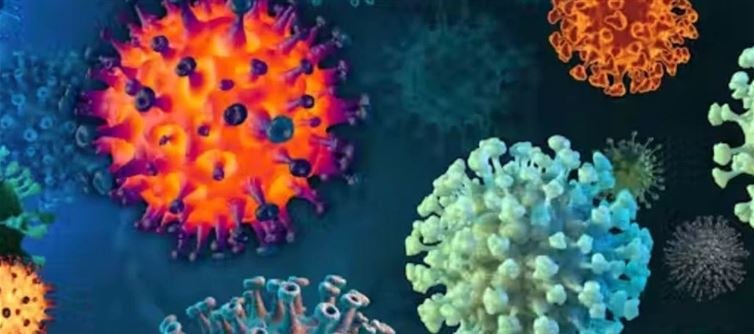
According to INSACOG data, four cases of the LF.7 type and one case of the recently discovered COVID-19 variant NB.1.8.1 have been found in India.
The subvariants LF.7 and NB.1.8 are classified by the World health Organization (WHO) as Variants Under Monitoring as of May 2025, rather than as Variants of Concern or Variants of Interest. However, the increase in COVID cases in china and other parts of Asia is said to be caused by these varieties.
Data from the indian SARS-CoV-2 Genomics Consortium (INSACOG) shows that four cases of LF.7 were found in gujarat in May, while one case of NB.1.8.1 was found in tamil Nadu in April.
The most prevalent variety in india is still JN.1, accounting for 53% of examined samples, followed by BA.2 (26%), and various Omicron sublineages (20%).
Although NB.1.8.1 is classified as providing a low global public health risk by WHO's preliminary risk assessment, its spike protein mutations, including A435S, V445H, and T478I, indicate greater transmissibility and immune evasion in comparison to other variations.
There were 257 current Covid cases nationwide as of May 19.
Experts from the National Centre for Disease Control, ICMR, and other important health organizations recently examined the situation at a meeting presided over by the director General of health Services.
Nonetheless, limited increases have been documented in several places. There has been a steady increase over the past 20 days, with delhi reporting 23 new instances, andhra pradesh reporting four in the last 24 hours, telangana confirming one, and a nine-month-old in Bengaluru testing positive. In May alone, kerala reported 273 incidents.
The subvariants LF.7 and NB.1.8 are classified by the World health Organization (WHO) as Variants Under Monitoring as of May 2025, rather than as Variants of Concern or Variants of Interest. However, the increase in COVID cases in china and other parts of Asia is said to be caused by these varieties.
Data from the indian SARS-CoV-2 Genomics Consortium (INSACOG) shows that four cases of LF.7 were found in gujarat in May, while one case of NB.1.8.1 was found in tamil Nadu in April.
The most prevalent variety in india is still JN.1, accounting for 53% of examined samples, followed by BA.2 (26%), and various Omicron sublineages (20%).
Although NB.1.8.1 is classified as providing a low global public health risk by WHO's preliminary risk assessment, its spike protein mutations, including A435S, V445H, and T478I, indicate greater transmissibility and immune evasion in comparison to other variations.
There were 257 current Covid cases nationwide as of May 19.
Experts from the National Centre for Disease Control, ICMR, and other important health organizations recently examined the situation at a meeting presided over by the director General of health Services.
Nonetheless, limited increases have been documented in several places. There has been a steady increase over the past 20 days, with delhi reporting 23 new instances, andhra pradesh reporting four in the last 24 hours, telangana confirming one, and a nine-month-old in Bengaluru testing positive. In May alone, kerala reported 273 incidents.




 click and follow Indiaherald WhatsApp channel
click and follow Indiaherald WhatsApp channel